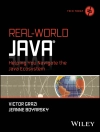What is this book about?Professional Red Hat Enterprise Linux 3 is a completeprofessional guide to setting up, configuring, and deploying Red Hat Enterprise Linux in the corporate production environment. Thebook focuses on Enterprise Server and Advanced Server features, including the key areas of high availability with the Red Hat Cluster Suite, Red Hat Network Control Center, and Red Hat Enterprise applications such as the Content Management System andportal server. Other key unique features include kernel tuning forvarious performance profiles; advanced Apache configuration; Tuxinstallation/maintenance; building high-performance FTP servers;building high-performance mail servers (which means replacing Sendmail); Mailing list management; how to efficiently add, remove, or modify 100 users at the same time; and a discussion of diskquota management and monitoring.What does this book cover?The key features of the book include the following:* How to install and setup RHEL 3* How to deploy RHEL 3 in production environment* How to manage an RHEL system using Perl and shellscripting* Advanced administration tools* How to use Red Hat network service* Details on installation and setup of security tools* Ability to use and deploy High Availability solutions providedwith RHEL 3* Performance tuning* How to use monitoring tools* Ability to use RHEL to provide scalable infrastructuresolutions.
Cuprins
Acknowledgments.Introduction.Chapter 1: RHEL 3 Basics.Chapter 2: Using Red Hat Network.Chapter 3: The File System.Chapter 4: Storage Management.Chapter 5: High Availability: Ensuring You’re Always Up.Chapter 6: Red Hat Enterprise Applications.Chapter 7: System Administration.Chapter 8: Building Web Server Services.Chapter 9: Building Remote Access Services.Chapter 10: Building Print Services.Chapter 11: Building File Sharing Services.Chapter 12: Building Enterprise Email Services.Chapter 13: Building DNS & LDAP Services.Chapter 14: Advanced System Administration.Chapter 15: RHEL 3 Security.Chapter 16: Managing Your System with Perl and Shell Scripting.Chapter 17: Where to Now?Summary.Appendix A: Installing RHEL 3.Appendix B: Installing Software.Index.
Despre autor
Kapil Sharma developed a keen interest in Linux and opensource technology in the mid-90s and has been working on various Unix systems and Internet Security technologies for more than 10years. He is a postgraduate in business computing and has deployedmany Unix, high-availability, clustering, and Internet securityprojects. He is a Sun certified system administrator (SCSA) and Suncertified network administrator (SCNA). He is also activelyinvolved in the open source community and has contributed manytechnical articles on system and network security. He enjoysworking on new challenges in Internet security, Internetarchitecture design, and various Unix flavors. He also fanciestechnical writing and thereby sharing his knowledge with thecommunity. He maintains a consulting company that provides Unix and Internet security solutions, and a Web site with loads of securityresources at www.linux4biz.net.Mohammed J. Kabir is CEO and founder of EVOKNOW, Inc. Hiscompany (www.evoknow.com) develops software using LAMP (Linux, Apache, My SQL, and PHP), Java, and C++. It specializes in customsoftware development and offers security consulting services tomany companies around the globe.When he is not busy managing software projects or writing books, Kabir enjoys riding mountain bikes and watching sci-fi movies.Kabir studied computer engineering at California State University, Sacramento, and is also the author of Apache Server 2 Bible, Apache Server Administrator’s Handbook, and Red Hat Server 8. You can contact Kabir via email [email protected] Norton has been working with Unix and Linux forover a decade. He has worked at companies large and small solvingproblems with Linux. He is an officer of the New York Linux Usersgroup, and can be found on the nylug-talk mailing list. Hecurrently works for a large company in New York City. He’s avegetarian who enjoys playing capoeira angola, drinking Germanbeer, learning Portuguese, indoor rock climbing, and sunshine.Nathan A. Good is a software engineer, author, andall-around computer nerd living in the Twin Cities area in Minnesota. His computer expertise can best be described as’jack of all trades, master of none.’ He has beenadministering and using Red Hat Linux boxes since RH 5, and hasused many other distributions as well. He has also administered Sun, HP-UX, and AIX servers, and Windows servers and PCs.Nathan has done programming in Java, Perl, PHP, C, C# and ASP.NET, and Bash shell scripting. He’s also worked with Delphi, buthe doesn’t tell anyone.Tony Steidler-Dennison is a freelance PHP/My SQL developerand longtime Red Hat Linux user. His coding credits encompass awide range of applications, including robotic telescope controlsoftware, online personal information management tools, and onlinejob site spidering. As an author, he was the original editor of’Lockernome’s Penguin Shell’ newsletter andcontributes frequently to Linux Journal. He’s alsodabbled in the political arena, serving as the principal PHP/My SQLdeveloper for the Wesley Clark for President campaign in2003-2004.












